Prague Monuments
Prague Castle (Pražský hrad)
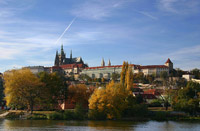
Prague Castle (Czech: Pražský hrad) is a castle in Prague where the Kings of Bohemia, Holy Roman Emperors and presidents of Czechoslovakia and the Czech Republic have had their offices. The Bohemian Crown Jewels are kept here.
According to the Guinness Book of World Records, the Prague Castle is the largest coherent castle complex in the world with an area of almost 70000 m², being 570 meters in length and an average of about 130 meters wide.
History
The history of the castle stretches back to the 9th century (870). The first walled building was the Church of the Virgin Mary. The …
Read more
Charles Bridge (Karlův most)
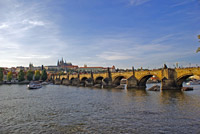
The Charles Bridge (Czech: Karlův most) is a famous historic bridge that crosses the Vltava river in Prague, Czech Republic. Its construction started in 1357 under the auspices of King Charles IV, and finished in the beginning of the 15th century. As the only means of crossing the river Vltava (Moldau) until 1841, the Charles Bridge was the most important connection between Prague Castle and the city's Old Town and adjacent areas. This "solid-land" connection made Prague important as a trade route between Eastern and Western Europe. The bridge was originally called the Stone Bridge (Kamenný …
Read more
National Museum (Národní muzeum)
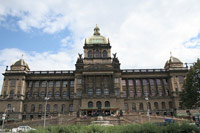
The National Museum (Czech: Národní Muzeum) is a Czech museum institution intended to systematically establish, prepare and publicly exhibit natural scientific and historical collections. It was founded 1818 in Prague by Kašpar Maria Šternberg. Historian František Palacký was also strongly involved.
At present the National Museum houses almost 14 million items from the area of natural history, history, arts, music and librarianship, located in tens of buildings.
Origins
The founding of the National Museum should be seen in the context of the times, where after the French Revolution, …
Read more
National Theatre (Národní divadlo)
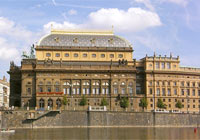
The National Theatre (Czech: Národní Divadlo) in Prague is known as the Alma Mater of Czech Opera, and as the national monument of Czech history and art.
The National Theatre belongs to the most important Czech cultural institutions with a rich artistic tradition which was created and maintained by the most distinguished personalities in Czech society. This tradition helped to preserve and develop the most important features of the nation – the Czech language and a sense for a Czech musical and dramatic way of thinking.
Today the National Theatre consists of three artistic ensembles – …
Read more
St. Vitus Cathedral (Katedrála svatého Víta)
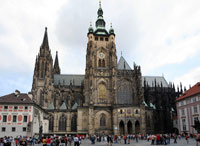
Saint Vitus Cathedral (Czech: Katedrála svatého Víta) is a Roman Catholic cathedral in Prague, and the seat of the Archbishop of Prague. The full name of the cathedral is St. Vitus, St. Wenceslas and St. Adalbert Cathedral. Located within Prague Castle and containing the tombs of many Bohemian kings and Holy Roman Emperors, this cathedral is an excellent example of Gothic architecture and is the biggest and most important church in the country.
Origins
The current cathedral is the third of a series of religious buildings at the site, all dedicated to St. Vitus. The first church was an …
Read more
Old Town Square (Staroměstské náměstí)
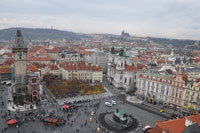
Old Town Square (Czech: Staroměstské náměstí) is a historic square in the Old Town quarter of Prague in the Czech Republic at 50°5′14″N 14°25′17″E.
Located between Wenceslas Square and the Charles Bridge, Prague's Old Town Square is often bursting at the seams with tourists in the summer. Featuring various architectural styles including the gothic Týn Cathedral and baroque St. Nicholas Church, the square is an oasis for travelers wearied by Prague's narrow streets. Among many churches, tourists may find the Astronomical Clock on this square, while the tower at the Old Town Hall offers a …
Read more
Old Town Hall (Staroměstská radnice)
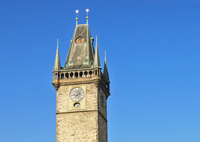
Prague's Old Town Hall was built in 1364. The astronomical clock in the town hall's tower is one of the city's most popular tourist attractions. Originally the building served only as the city hall of the old town, but later became the city hall for all of Prague. It is now only used for ceremonial functions.
The Town Hall
After King John of Luxembourg accorded the citizens of Prague the privilege of having their own district council in 1338, they decided to build a Town Hall, paid for by a duty levied on wine. The almost 70 meters high tower was completed in 1364. Due to continuous …
Read more
Astronomical Clock (Staroměstský orloj)
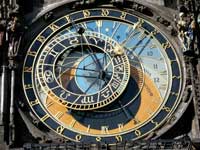
The Prague Astronomical Clock or Prague Orloj (Czech: Pražský orloj) is a medieval astronomical clock located in Prague, the capital of the Czech Republic, at 50°5′13.23″N 14°25′15.30″E. The Orloj is mounted on the southern wall of Old Town City Hall in the Old Town Square and is a popular tourist attraction.
The Orloj is composed of three main components: the astronomical dial, representing the position of the Sun and Moon in the sky and displaying various astronomical details; "The Walk of the Apostles", a clockwork hourly show of figures of the Apostles and other moving sculptures; and …
Read more
State Opera (Státní opera)
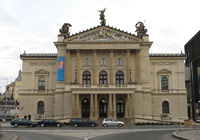
The Prague State Opera (Czech: Státní opera Praha), is an opera and ballet company in Prague, Czech Republic. The theatre was originally founded in 1888 as the New German Theatre and from 1949 to 1989 it was known as the Smetana Theatre.
History
New German Theatre
The history of the theatre currently known as the Prague State Opera dates back to the late 19th Century. While often overshadowed by the more prominent National Theatre of Prague, the company has its own distinct history. The birth of a magnificent Czech Theatre, the National Theatre, in 1883 indirectly created a longing …
Read more
Wenceslas Square (Václavské náměstí)
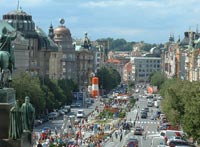
Wenceslas Square (Czech: Václavské náměstí) is one of the main city squares and the centre of the business and cultural communities in the New Town of Prague, Czech Republic. Many historical events occurred there, and it is a traditional setting for demonstrations, celebrations, and other public gatherings. The square is named after Saint Wenceslas, the patron saint of Bohemia. It is part of the historic centre of Prague, a World Heritage Site.
Formerly known as Koňský trh (English: Horse Market), for its periodic accommodation of horse markets during the Middle Ages, it was renamed …
Read more
Wallenstein Palace (Valdštejnský palác)
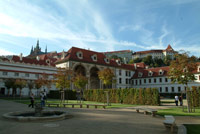
Wallenstein Palace (Czech: Valdštejnský palác) is a Baroque palace in Malá Strana, Prague, currently the home of the Czech Senate.
History
The original Palace was built in years 1623-1630 by Albrecht von Wallenstein, Duke of Mecklenburg (1583-1634), who made his name and fortune as the Commander-in-Chief of the Imperial forces in the Thirty Years War. Emperor Ferdinand II feared Albrecht of Wallenstein’s calculating mind and had him assassinated in 1634 in the town of Cheb. He lived in the palace for only a year before his death. His widow sold it to his nephew and it remained in the …
Read more
Kinsky Palace (Palác Kinských)
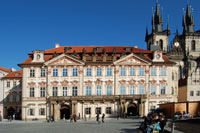
Kinsky Palace (Czech: Palác Kinských) with its beautiful pink and white stucco fasade promotes the special image of Old Town Square. It was build for Jan Arnost Goltz in 1755-65 on the place where used to stand two hotels. Goltz had the buildings rebuilt in Rococo palace with two entrances framed with two pillars. On the first floor the pillars are connected with a balcony with a balustrade.
After the death of Count Goltz, the palace was bought by Kinsky family who stayed in the palace until 1945. The palace contained a valuable family library, now it hosts collections of the National …
Read more
Municipal House (Obecní dům)
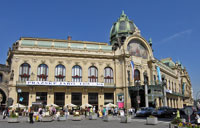
The Municipal House (in Czech, Obecní dům) is a major civic landmark and concert hall in Prague, and an important building in architectural and political history in the Czech Republic. It stands on the Náměstí Republiky.
Around 1900, the building was commissioned by the city on an odd-shaped lot and the subject of one architectural competition, then another, both unsatisfactory. The job was then simply given to architects Osvald Polívka and Antonín Balšánek, who served as much as artistic coordinators as designers. Construction started in 1905 and it opened in 1912.
The Art Nouveau …
Read more
Powder Tower (Prašná brána)
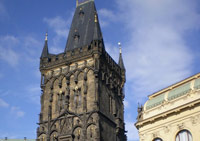
The Powder Tower (Czech: Prašná brána, literally "Powder Gate") is a Gothic tower in Prague, Czech Republic and one of the old city gates. It is one of the symbols of Prague, leading into the Old Town.
Dating from 1475, the Powder Tower was built as one of 13 gates to the city of Prague. When construction began, it was connected (via the small bridge at the right of the photo) to the royal palace. Before construction was completed, however, King Vladislav Jagellonský moved his residence to Prague Castle in 1485. Nevertheless, the Powder Tower remained important to the Bohemian kings - …
Read more
Tyn Church (Týnský chrám)
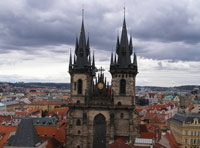
The Church of Our Lady before Týn (in Czech Kostel Matky Boží před Týnem, also Týnský chrám (Týn Church) or just Týn) is a dominant feature of the Old Town of Prague, Czech Republic, and has been the main church of this part of the city since the 14th century. The church's towers are 80 m high and topped by four small spires.
History
In the 11th century, this area was occupied by a Romanesque church, which was built there for foreign merchants coming to the near Týn Courtyard. Later it was replaced by an early Gothic Church of Our Lady in front of Týn in 1256. Construction of the …
Read more
Bethlehem Chapel (Betlémská kaple)
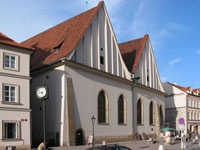
The Bethlehem Chapel (Czech: Betlémská kaple) is a medieval religious building in Prague, Czech Republic notable for its connection with the Czech reformer Jan Hus. It was opened for sermons in 1394, and taught solely in the Czech vernacular, thus breaking with German domination of the Medieval Bohemian church. The building was never officially called as a church, only a chapel.
In the 17th century, the building was acquired by the Jesuits. During reign of the Emperor Joseph II (1780s) converted into an apartment building. Under the Czechoslovakian communist regime the building was …
Read more
Carolinum (Karolinum)
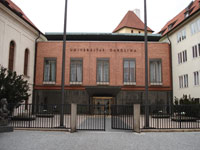
Karolinum (formerly Latin: Collegium Carolinum, in Czech Karlova kolej) is a complex of buildings located in the Old Town of the City of Prague. Karolinum, the seat of the Charles University in Prague, is one of the oldest dormitories situated in the Central Europe. The dormitory was named after the Emperor Charles IV.
History
Shortly after the establishing of Charles University in 1348, the young insititution encountered several organizational problems. One of the major complications was the lack of lecture and accommodation rooms for teachers and students. Emperor Charles IV, apparently …
Read more
Clementinum (Klementinum)
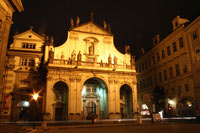
The Clementinum (Klementinum) is a historic complex of buildings in Prague. Today the complex hosts the National, University and Technical libraries, being the City Library also located nearby on Mariánské Náměstí. It is currently in use as the National Library of the Czech Republic. In 2005 the Czech National Library received the UNESCO´s Jikji prize (Memory of the World).
Its history dates from the existence of a chapel dedicated to Saint Clement in the 11th century. A Dominican monastery was founded in the medieval period, which was transformed in 1556 to a Jesuit college. In 1622 the …
Read more
Rudolfinum
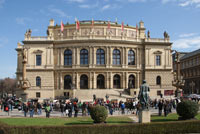
The Rudolfinum is a music auditorium in Prague, Czech Republic. It is one of the most important neo-renaissance buildings in the city and is situated at Jan Palach Square on the bank of the river Vltava.
Since 1946 the Rudolfinum has been the home-stage of the Czech Philharmonic Orchestra and one of the main venues performed in the Dvořák Hall for the Prague Spring International Music Festival held each year in May and June. The building was designed by architect Josef Zítek and his student Josef Schulz, and was opened February 8, 1885. It is named in honour of Rudolf, Crown Prince of …
Read more
Jindrisska Tower (Jindřišská věž)
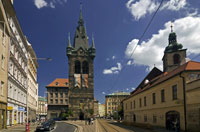
The Jindrisska Tower is a historic bell tower, first built in the 15th century. Renovated in 2001 the tower now features a restaurant and a 10th floor lookout where you have great views over the city.
History
At 65.7 meter (216 ft), the Jindrisska Tower is the tallest free-standing bell tower in Prague. Its history goes back to 1475 when it was built in wood as the bell tower of the Church of St. Henry and Kunhuta (kostel sv Jindrich a Kunhuty), the parish church of New Town.
The current stone version was built at the end of the 16th century. The tower was damaged several times, first …
Read more
St. George's Basilica (Bazilika svatého Jiří)
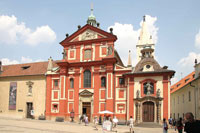
St. George's Basilica (Czech: Bazilika Sv. Jiří) is the oldest surviving church building within Prague Castle, Prague, Czech Republic. The basilica was founded by Vratislaus I of Bohemia in 920. It is dedicated to Saint George.
The basilica was substantially enlarged in 973 with the addition of the Benedictine St. George's Abbey. It was rebuilt following a major fire in 1142. The Baroque façade dates from the late 17th century. A Gothic style chapel dedicated to Ludmila of Bohemia holds the tomb of the saint. The shrines of Vratislav and Boleslaus II of Bohemia are also in the basilica. …
Read more
St. Nicholas Church (Kostel svatého Mikuláše)
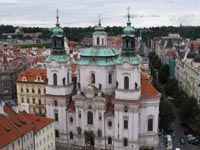
Though smaller and not as rich as the Cathedral of St. Nicholas from the Lesser Town, The Church of St. Nicholas in the Old Town Square plenty deserves its place among Prague’s most appreciated and visited places. If you just think about the eight centuries that it has stood and faced the wickedness of the history you come to look at it in a totally different way.
History
Historical sources mention this place of worship as early as 1273, originally as a parish church, where Hussitism and Reformation used to be preached. Later in the 17th century the church fell into Benedictine …
Read more
St. Nicholas Church (Chrám svatého Mikuláše)
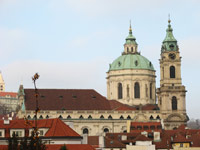
St. Nicholas Church (Cathedral) (Chrám svatého Mikuláše) from the Lesser Quarter in Prague has put its name into Czech and European Baroque era and is now Prague number one church of this kind. Its history is linked to Czech re-catholisation process that followed the defeat of the Hussites in the Battle of the White Mountain (1620).
The beginnings of the imposing Cathedral that we see today go back to the year 1283, when the place of worship started its existence as a parish church under the name and protection of St. Nicholas. With the change of authority in the 17th century, Baroque era …
Read more
Black Tower (Černá věž)
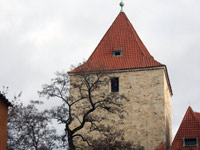
The Black Tower is one of the oldest existing buildings in Prague. It was built in 1135 as an eastern gate of the Romanesque fortification of Prague Castle. You can still see the former gateway on the ground floor, but it is walled up now.
Origin of the name "Black Tower"
The Black Tower belongs to the area of the Supreme Burgrave's House at Prague Castle. Its name "Black" originates from the time of the big fire of Prague Castle in 1541 - its walls remained black for a long time.
However, the tower was called "Golden" in the era of Emperor Charles IV in the 14th century because of its …
Read more
Vysehrad (Vyšehrad)
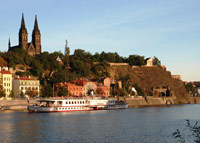
Vysehrad is a castle located in the city of Prague, Czech Republic. It was probably built in the 10th century, on a hill over the Vltava River. Situated within the castle is the Basilica of St Peter and St Paul, as well as the Vysehrad Cemetery, containing the remains of many famous people from the Czech history, among them Antonín Dvořák, Bedřich Smetana and Karel Čapek.
Local legend holds that Vysehrad was the location of the first settlement which would later become Prague, though thus far this claim remains unsubstantiated.
History
When the Přemyslid dynasty settled on the current …
Read more
Church of Our Lady Victorious (Kostel panny Marie Vítězné)
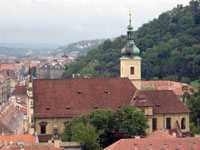
The Church of Our Lady Victorious (Czech: Kostel Panny Marie Vítězné) in Malá Strana, the "small side" of Prague is a Carmelite church and the home of the statue called the "Infant Jesus of Prague".
A chapel dedicated to the Holy Trinity was built on this site in 1584. With the Battle of White Mountain, 8 November 1620, the Counter-Reformation signalled the re-Catholicisation of Prague. The church was given to the direction of the Carmelites in September 1624. The triumphalist altarpiece of Our Lady of Victory was sent from Rome by Pope Gregory XV. The Carmelites were ordered to hand over …
Read more
Lesser Town Square (Malostranské náměstí)
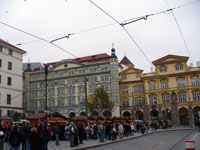
Since it was laid out in 1257, this square has been the heart of Lesser Town (Czech: Malá Strana), a district situated at the foot of the Prague Castle. The square is dominated by St. Nicholas Church, a impressive baroque church that occupies the center of the square.
Magnificent houses with Renaissance and Baroque façades border Lesser Town Square (Czech: Malostranské náměstí) on all sides. During the Middle Ages, when the square was the site of a market for the Prague Castle, the buildings had Gothic designs. A fire that broke out at the square destroyed most of the houses and they were …
Read more
Petrin (Petřín)
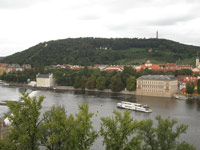
Petřín (327 m) is a hill in the center of Prague, Czech Republic. It rises some 130 m above the left bank of the Vltava River. The hill, almost entirely covered with parks, is a favorite recreational area for the inhabitants of Prague. The hill (in German known as Laurenziberg) is featured prominently in Franz Kafka's early short story "Description of a Struggle" and briefly in Milan Kundera's novel The Unbearable Lightness of Being.
The summit of the hill is linked to Prague's Malá Strana district by the Petřín funicular, a funicular railway that first operated in 1891.
Read more
Operator
- Phone: +420 261 264 369
- E-mail: info@arcadira.eu
Tourist information
Tourist Information about Prague and Czech republic. History, Culture, Language, Currency, Visa and much more.
List of our Prague hotels
Prague hotels - 3 star
- Botel Albatros
- Botel Florentina
- Botel Racek
- Hotel Ankora
- Hotel Arbes - Mepro
- Hotel Atos
- Hotel Donatello
- Hotel Globus
- Hotel Gloria
- Hotel ILF
- Hotel Legie
- Hotel Old Prague
- Hotel Olsanka
- Hotel Olympik Tristar
- Hotel Victoria
- King George´s House
Prague hotels - 4 star
- Hotel Adria
- Hotel Amigo
- Hotel Arkada
- Hotel Barceló
- Hotel Barceló Old Town
- Hotel Caesar Palace
- Hotel Corinthia Panorama
- Hotel Golf
- Hotel Holiday Inn Congress Centre
- Hotel Louis Leger
- Hotel Majestic Plaza
- Hotel Olympik
- Hotel Pyramida
- Hotel Roma
- Hotel Step
- Hotel U Krále Karla
- Hotel U Páva
- Hotel Yasmin
Prague hotels - 5 star
Contact
- Pragap Tour, s.r.o. (Arcadira)
- Liliová 10
- 110 00, Praha 1
- Česká republika
- Phone: +420 261 264 369
- Fax: +420 244 400 157
- E-mail: info@arcadira.eu
- Facebook: www.facebook.com
- ICO: 25147412
- DIC: CZ25147412
© 2008-2024 Pragap Tour, s r.o. (Arcadira) | All Rights Reserved | Terms & Conditions | Created by Jaroslav Salivar